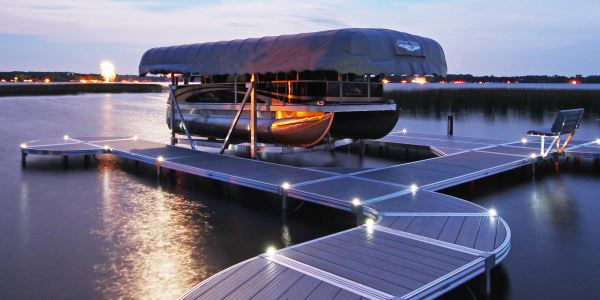 As time passes, most things begin to show signs of age. An older boat dock has a lot working against it thanks to the elements it’s exposed to year after year, and improper maintenance speeds up any kind of breakdown. While proper maintenance keeps a dock looking and performing beautifully longer, there may come a point in its lifetime when you need to think about replacing your dock. A dock that’s become dangerous or unreliable is one that needs to be replaced as soon as possible. There are five sure signs that you need a brand-new dock.
As time passes, most things begin to show signs of age. An older boat dock has a lot working against it thanks to the elements it’s exposed to year after year, and improper maintenance speeds up any kind of breakdown. While proper maintenance keeps a dock looking and performing beautifully longer, there may come a point in its lifetime when you need to think about replacing your dock. A dock that’s become dangerous or unreliable is one that needs to be replaced as soon as possible. There are five sure signs that you need a brand-new dock.
1 Large Amounts of Rust
A lot of metals will eventually rust or corrode when exposed to water, especially if you happen to live in an area with saltwater. Small amounts of rust can be handled with a DIY approach: rusted individual parts can be repaired or replaced, and small amounts of rust on larger parts could be ground off. However, if very large areas are covered with rust, the damage is much more widespread and is only going to get worse. Large areas of rust or corrosion will eventually spread and eat away at the metal on the dock, which makes breakage much more likely, and replacement basically inevitable.
2 Rotting Wood
Rot is a big problem for docks that are made of wood, and that are poorly maintained. Moss, mildew, algae, and other growth all trap moisture, which can make the problem worse. Keeping your dock clean and well-maintained can prevent marine growth, and remove any that’s started forming. As with rust, small parts or individual boards can be replaced with new lumber specifically treated to resist moisture. However, if multiple large areas or the foundation of the dock is deteriorating, it’s time to replace it. Consider an aluminum dock painted to look like wood for the visual appeal, but without the necessary maintenance.
3 Cracked or Warped Supports
Some support materials will last longer than others, and you naturally want your dock built on a solid foundation. This damage will happen over time as a result of pressure due to water currents and other conditions, but accidents can also happen—pontoons can hit the dock while it’s floating in the water, or during the loading process, for instance. Replacement of individual parts can resolve minor cracks in small areas, but if the damage is significant or on a load-bearing area, it’s better to be safe and replace the entire thing.
4 Foundation Damage
If you have a permanent dock, it likely sits on pillars, piles, or another underwater foundation support system. Unfortunately, this isn’t damage that you can assess with a glance: assessing the damage of underwater structures, let alone repairing it, might require specialized equipment. Like the supports, the foundation is going to be subjected to water, changing temperatures, currents, and other factors that can cause foundation shifts and serious damage. Any cracking is a sign that investigation is needed, at minimum, and possibly the replacement of the entire docking system.
5 Posts that are No Longer Set
Permanent docking systems have supports that need to be driven at least four feet into the ground to maximize dock stability. Rock and sand beds will naturally erode over time thanks to water movement, which can eventually make it difficult or impossible to properly set the supports. If you can’t plant your posts deep enough, it might be time to replace your dock, possibly with a floating dock that can easily adapt to changing water conditions.
If it’s time to replace or upgrade your dock, consult a reputable waterfront dealer. This is the chance to rebuild your waterfront into something new and customized to meet your needs. Maybe a fresh start before your next boat outing is exactly what you need.

